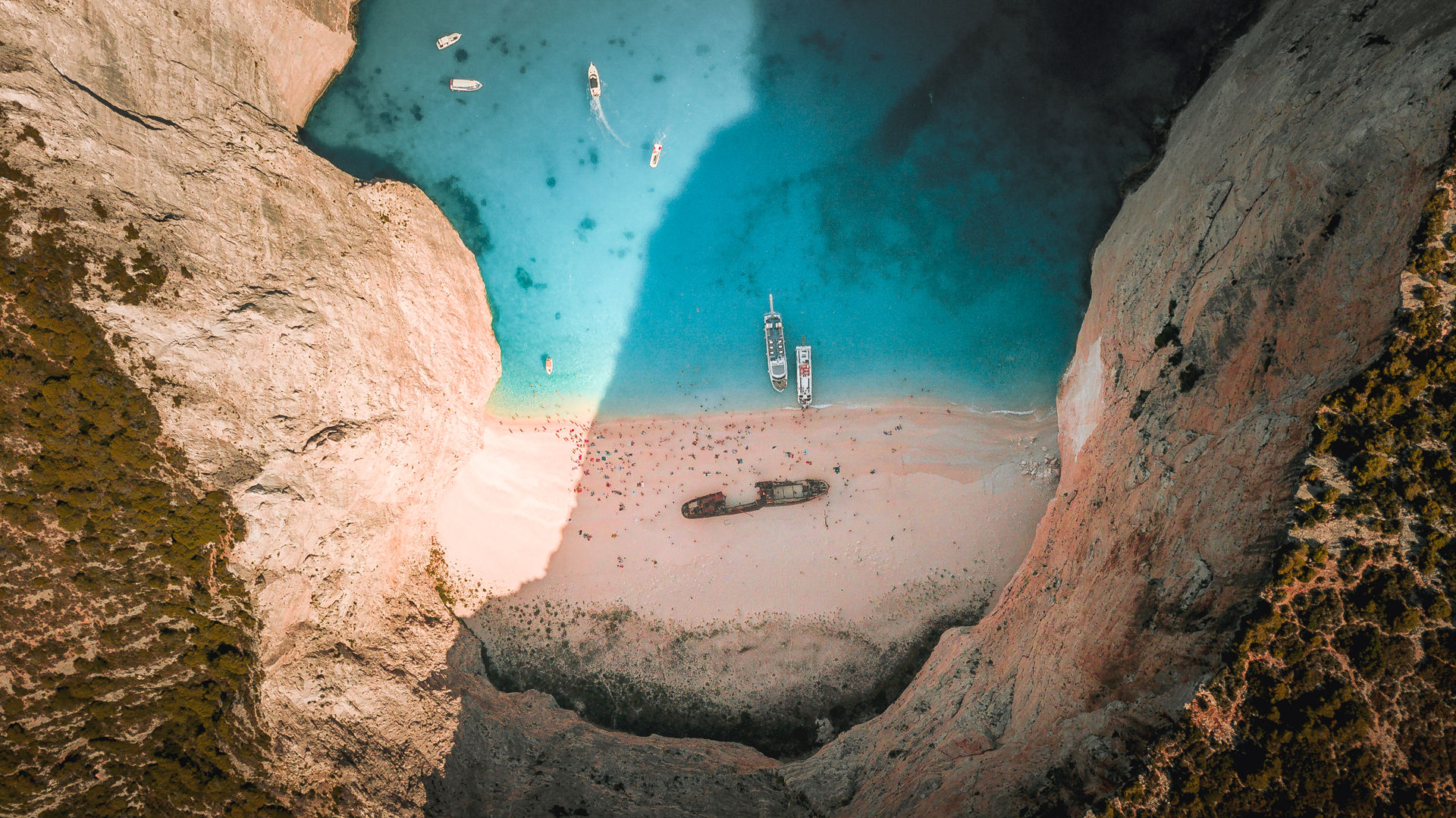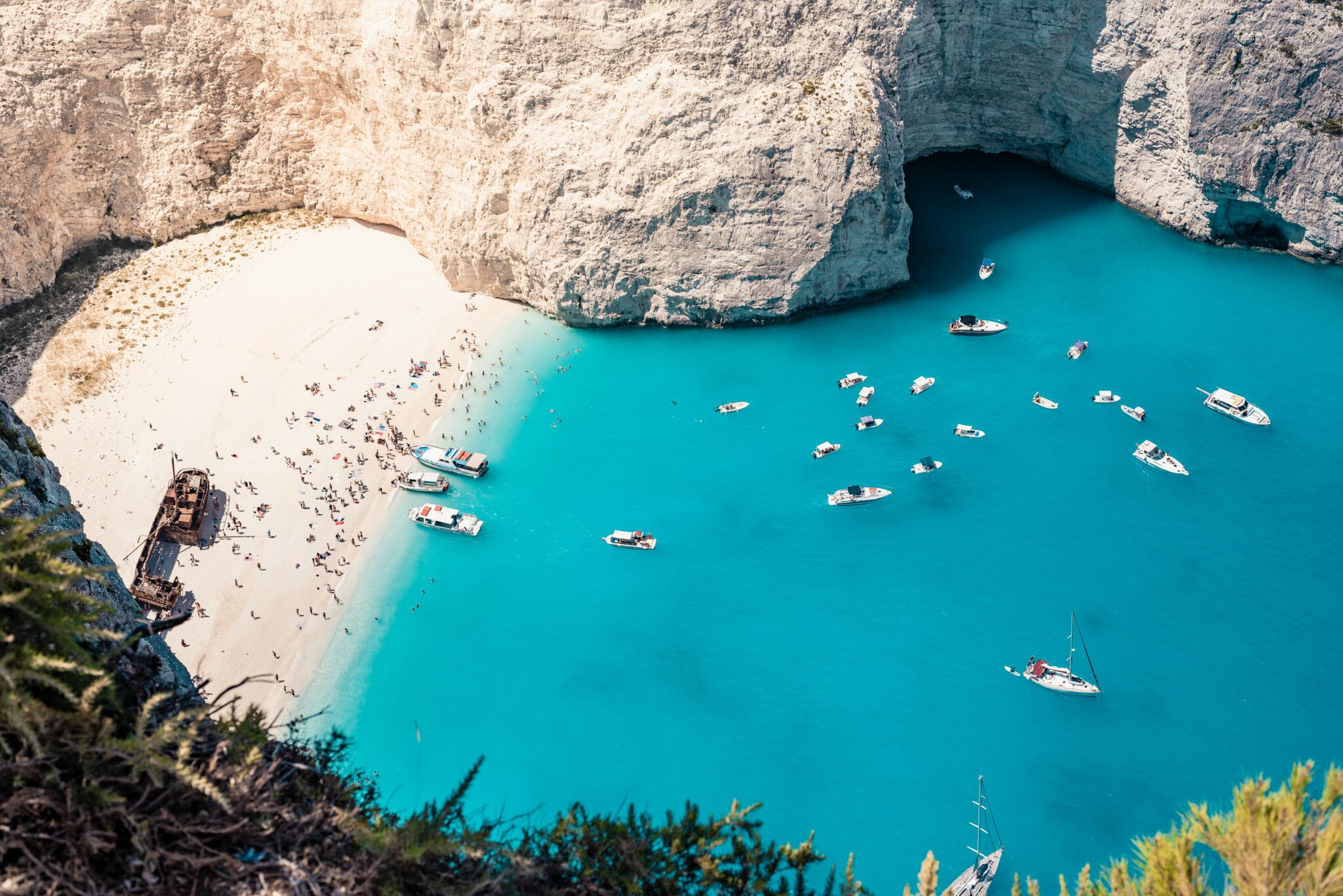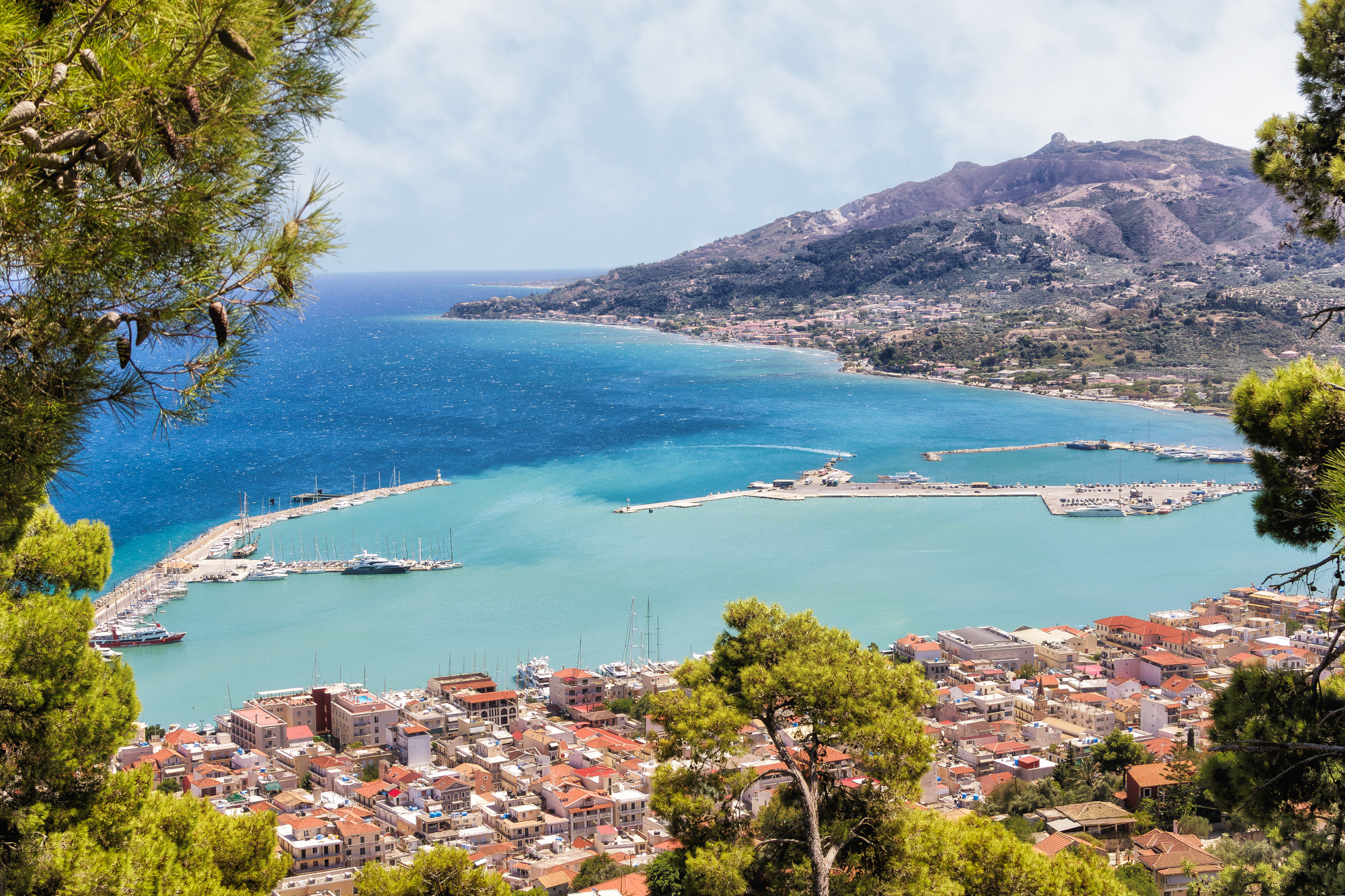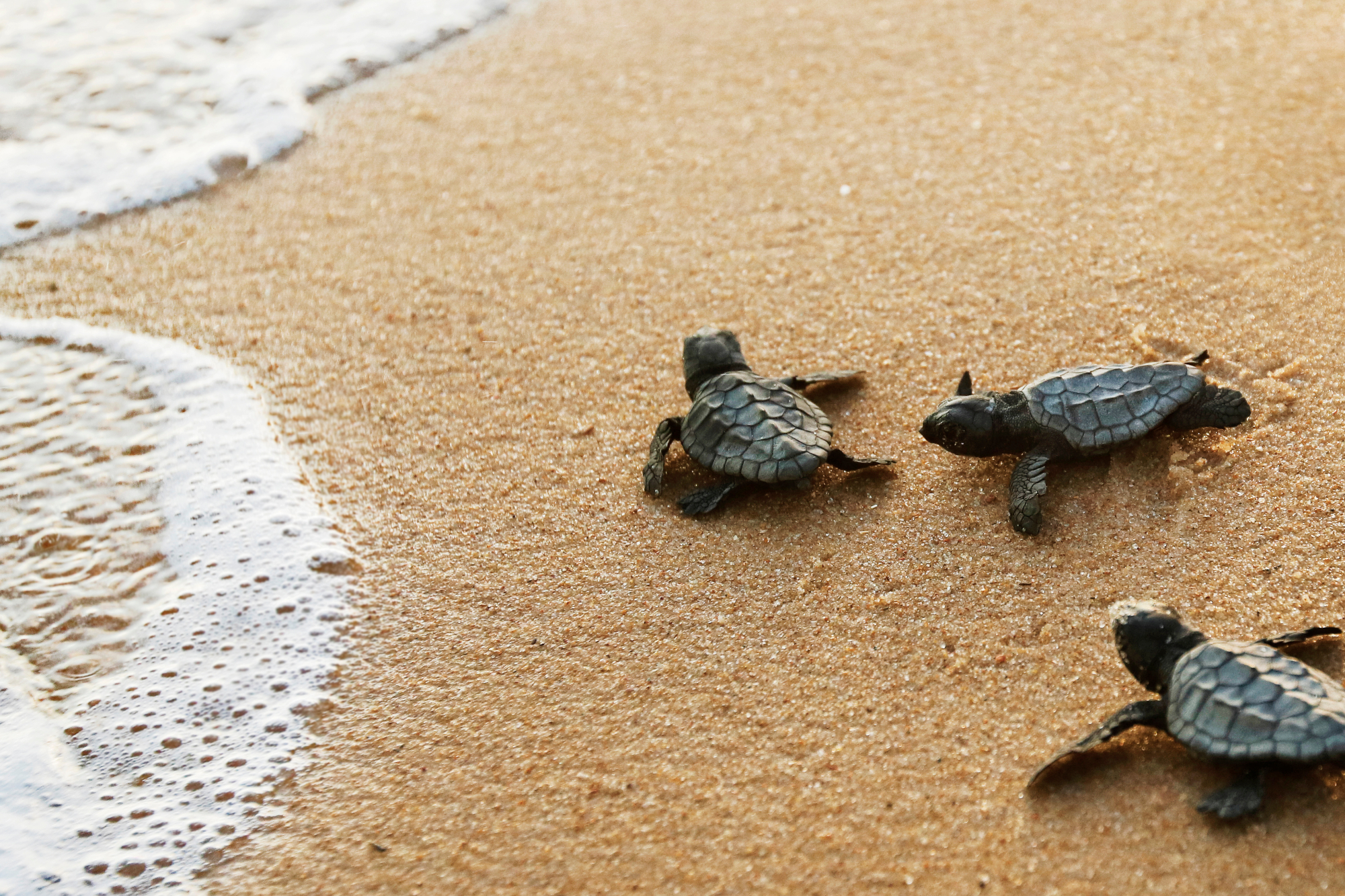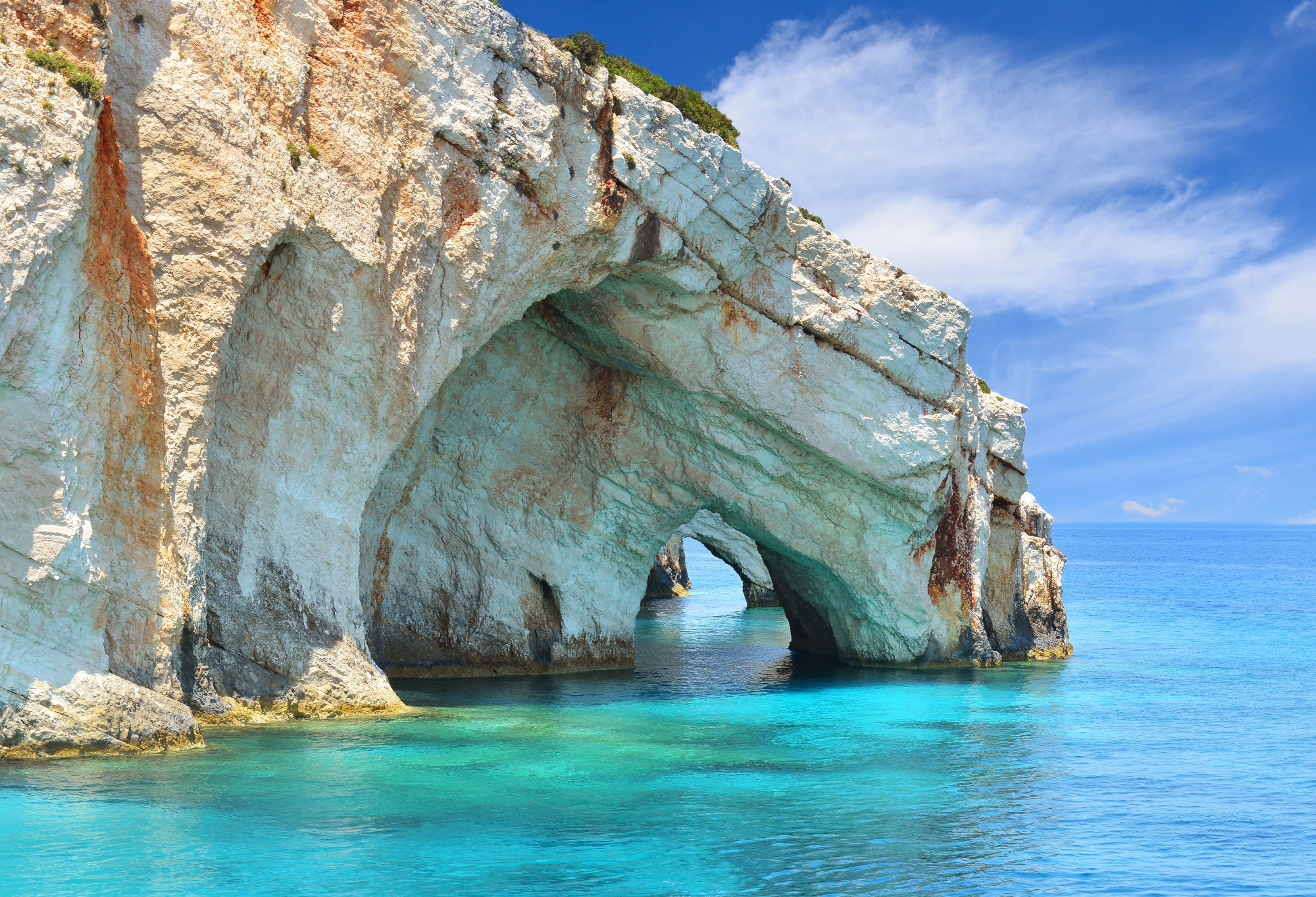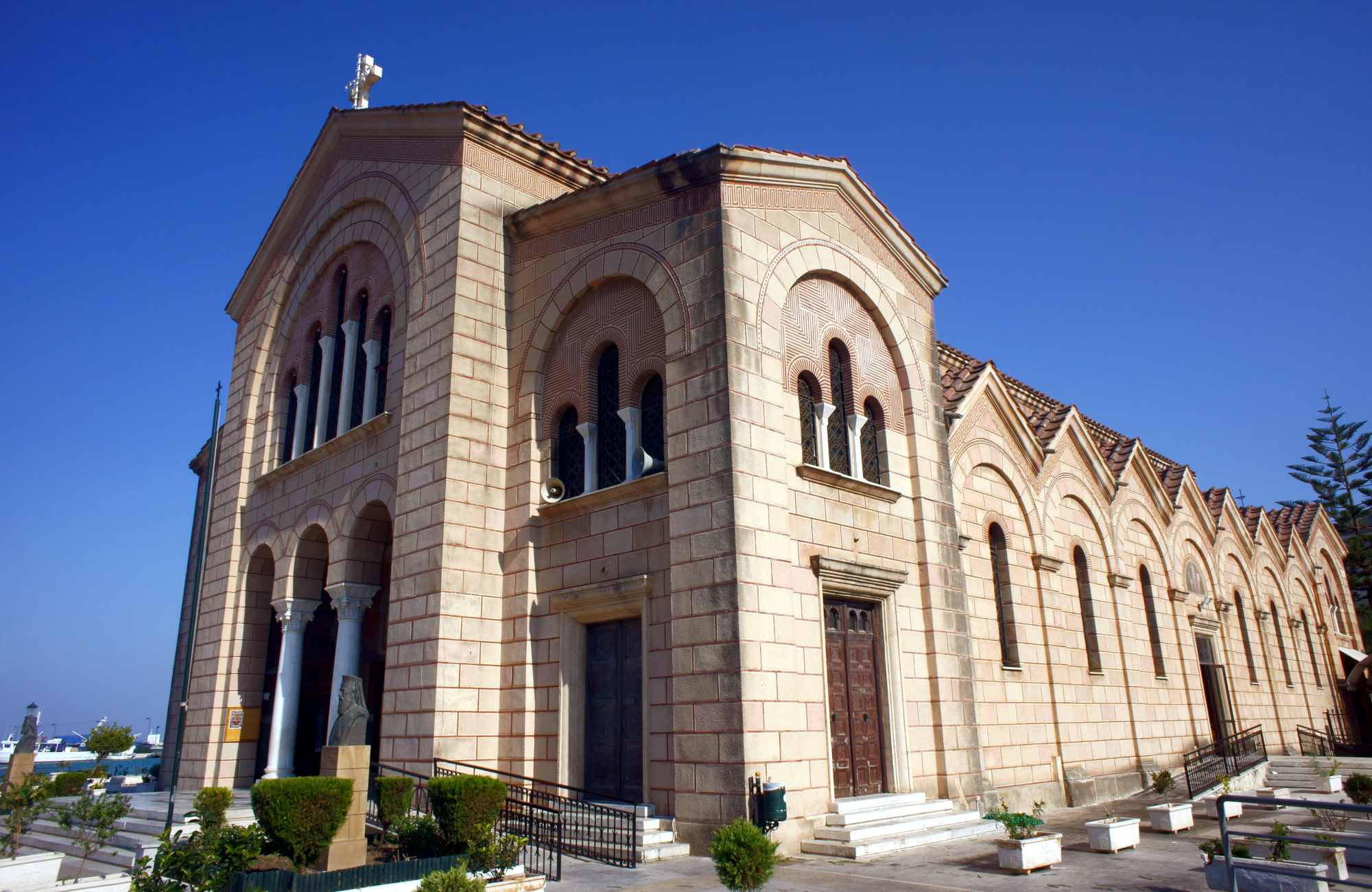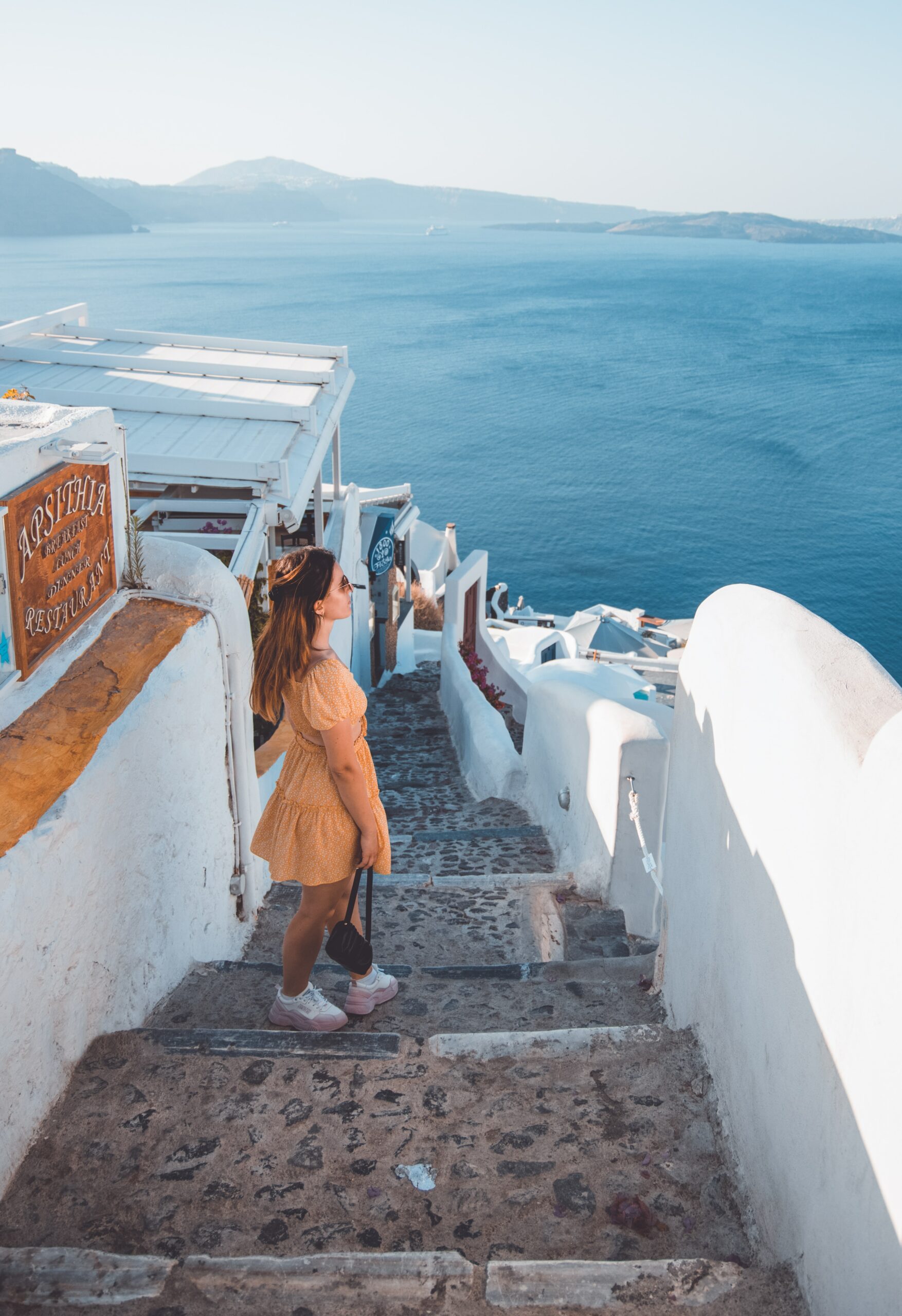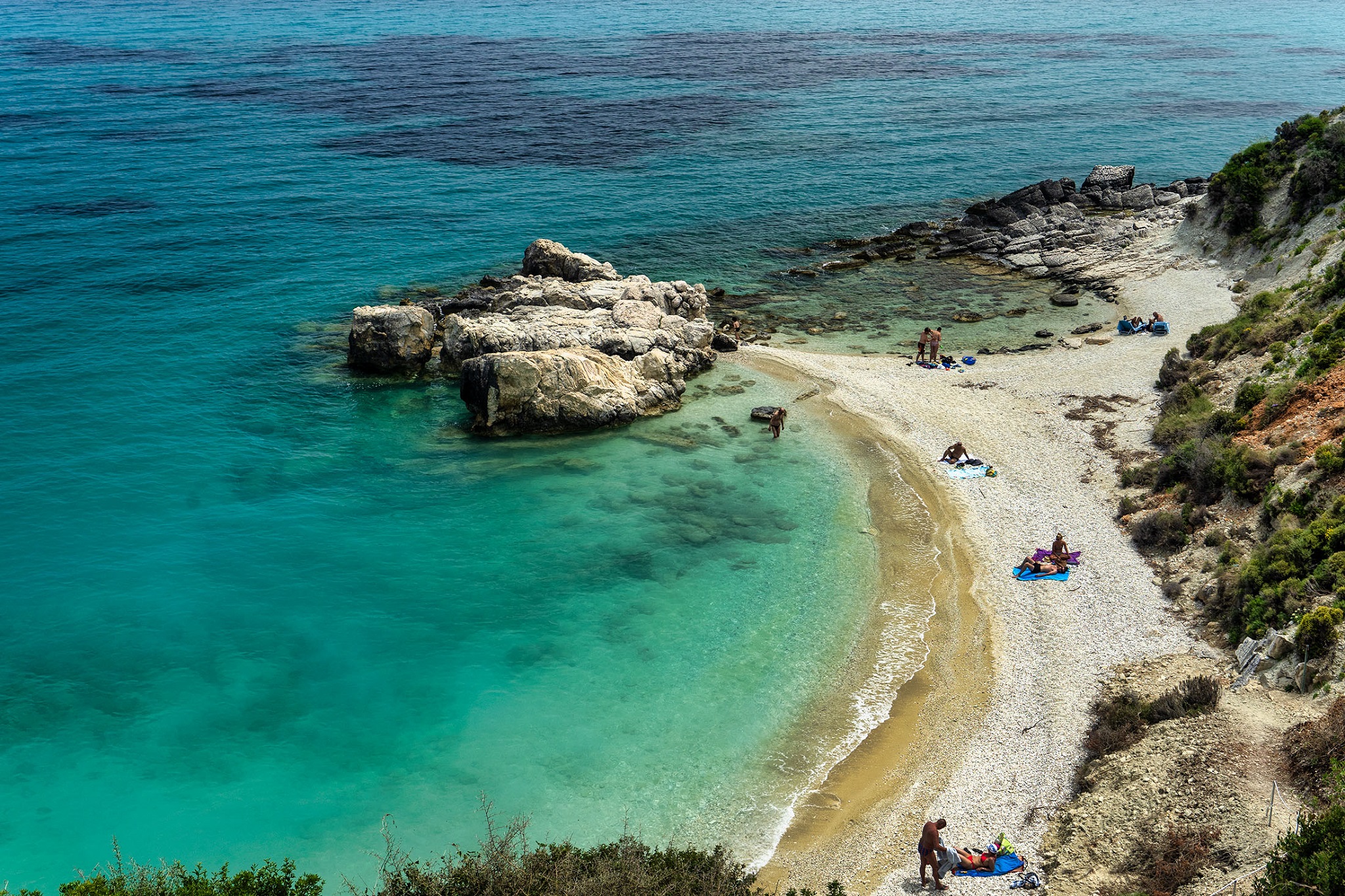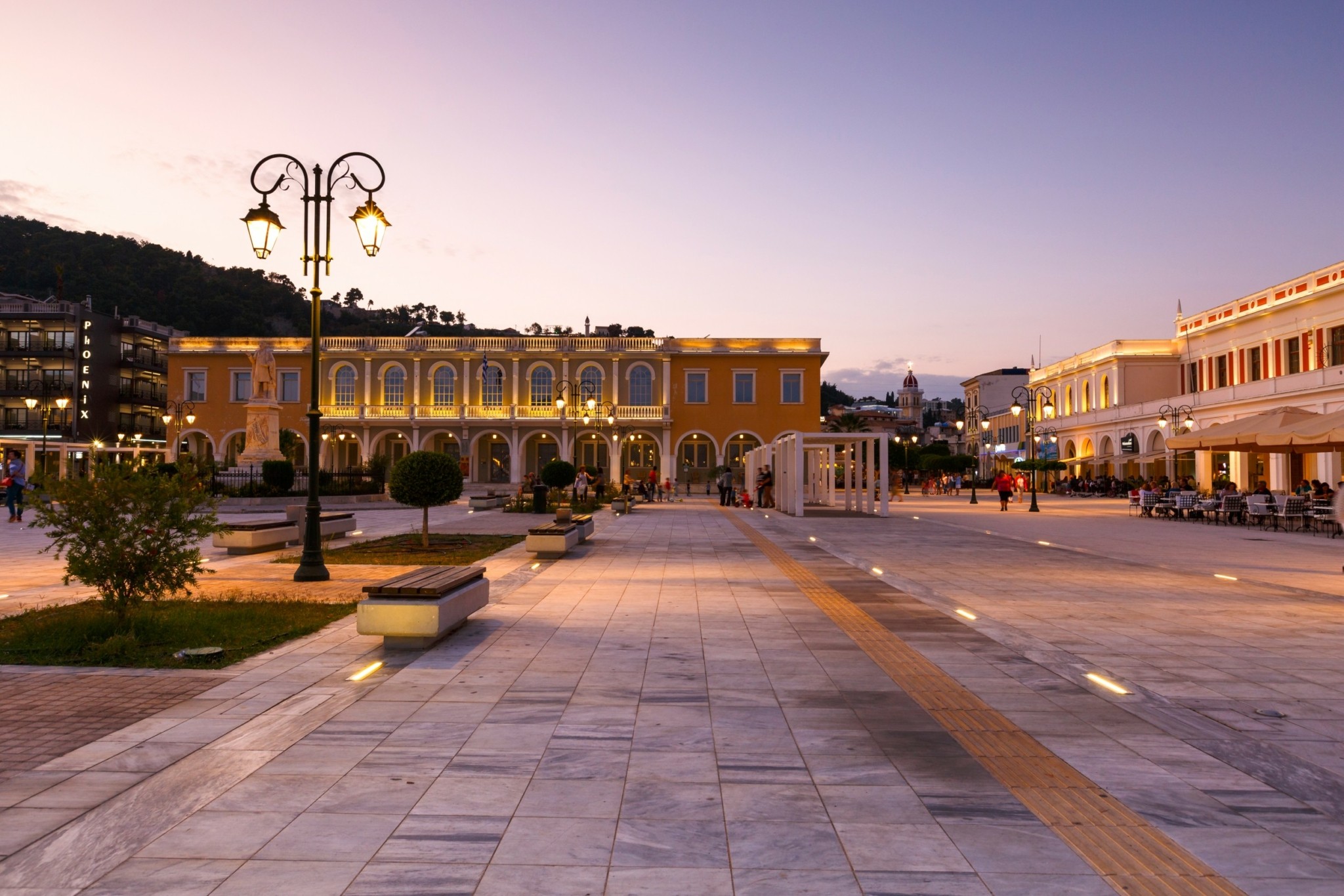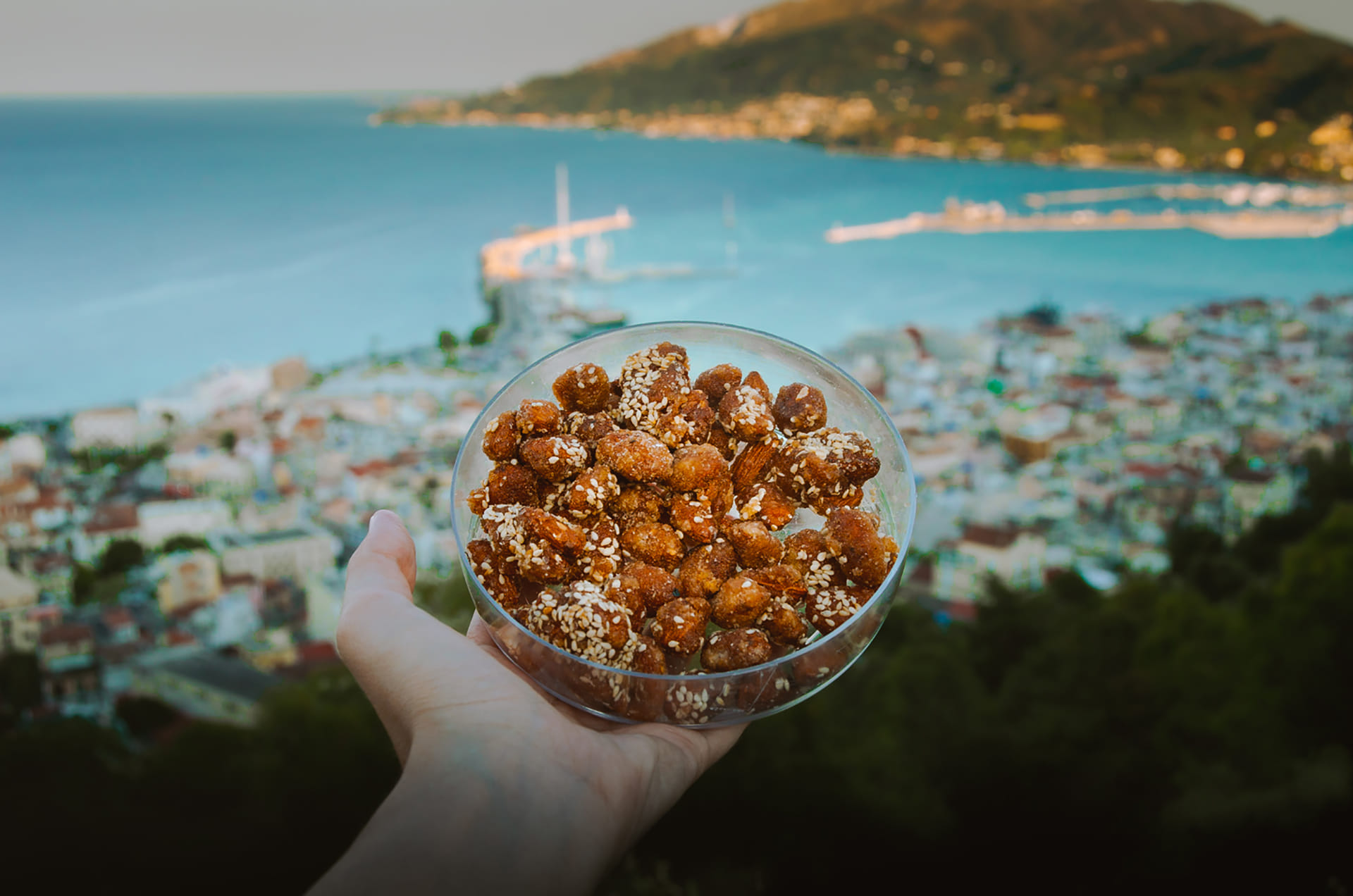The first thing you notice when you leave the port and approach the city centre is the huge sign reading “Freedom demands both virtue and daring”. From the national poet of Greece, Dionysios Solomos, who wrote the famous “Hymn to Liberty”, to Andreas Kalvos and Georgios Tertsetis, the island boasts a lot to be proud of.
Apart from the bust of Solomos on Strani Hill, within 2 km from the main town, and the Museum of Dionysios Solomos and Eminent Zakynthians, the Ionian island has much more to offer. Zakynthian courtyards are blooming, serenades are rekindled in the main town and some of Greece’s most beautiful beaches await you right here, including the famous Shipwreck. Among the places to see in Zakynthos are the church of Agios Dionysios, the hill of Bohali, the Blue Caves and the beaches where the loggerhead sea turtles lay their eggs.
Shipwreck
It is probably the most photographed beach in Greece and certainly the most famous beach of Zakynthos. And not without reason. The famous Shipwreck alone is worth the trip to the island. White sand, milky blue waters and towering white rocks. Located in the west of the island, the beach is accessible only by boat from Porto Vromi and Agios Nikolaos Volimon. You can also admire it from above, from an iron platform hanging in the void, near the village of Anafonitria. The story behind the famous shipwreck is that the ship, the MV Panagiotis, which was illegally carrying duty-free cigarettes from Turkey, was forced to run aground on the beach in 1983, probably due to mechanical failure. Today, the wrecked ship has almost sunk into the fine sand and its rust makes the best contrast with the unreal aquamarine sea and the brightness of the pristine landscape.
Bohali Hill
It is one of the most scenic spots on the island. Especially at night, when the town and the port are illuminated, the view from Bohali hill is magnificent. At the top of the hill stands the Castle of Zakynthos, the old capital of the island. The Bohali district is the most traditional of the island, with narrow streets, old houses and blossomed courtyards. Many mansions were destroyed in the 1953 earthquake, but Bohali still retains some of its original flair. At the Movida café-bar you can enjoy well-crafted cocktails along with the amazing views.
Info: Movida, Bohali hill, Zakynthos, +30 26950 24266
Loggerhead sea turtles
It is one of the oldest species on earth, native to the Mediterranean. The endangered loggerhead sea turtle (Caretta Caretta) favours the eastern beaches of Zakynthos to lay its eggs every year. It visits the sandy beaches late at night, digs its nest and leaves the eggs there to hatch. In 1999, the National Marine Park of Zakynthos was created in Laganas Bay, but unfortunately it has not been able to halt the tourist exploitation of the island, so the turtles now only visit very specific beaches to lay their eggs. One of these is the beach of Sekania, where more than 290 nests are recorded each year during the nesting season. Any approach to the site requires caution and respect for the endangered species.
Blue Caves
Anything that goes into the water automatically turns turquoise. An incredible, pure blue colour stains everything. In the Blue Caves at the north-eastern end of the island, the colours are simply stunning. The Caves were discovered at the end of the last century and since then thousands visit them every year. Take one of the small boats that depart from the port of Agios Nikolaos Volimon that fit inside the Caves. The best time to visit is early in the morning, as the sun adds to the colours. Don’t miss the opportunity to dive into the waters of the cave; open your eyes underwater and admire this unique iridescent shade of blue.
Agios Dionysios
The people of Zakynthos bow to his holiness and half of the island’s residents are named after him. On August 24 and December 17, the locals honour Agios Dionysios with a three-day celebration. The imposing church is located in the town of Zakynthos, opposite the port. This building was one of the few that survived the earthquake of 1953. The patron saint of the island was born in Zakynthos in 1547 and became known as the Saint of Pardon, after his brother’s murderer confessed to him and Agios Dionysios forgave him.



